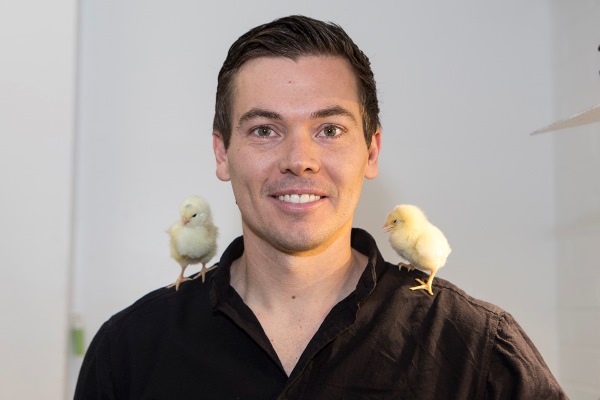Marcus Butler
14 July 2015: University of Canberra research is shining a bright light into myopia in an effort to determine ways to halt the growing rates of short-sightedness among young people.
Assistant professor of visual neuroscience Regan Ashby said the latest work from the University has linked the intensity of light exposure to the level of protection it provides against the disease.
His work has already established the link between exposure to light, especially sunlight and a reduction in the rates of myopia. However, his latest findings would suggest brighter light exposure can produce better results over time.
Dr Ashby works with very young roosters in his study because the chickens' visual system is similar to humans and his results translate well to the human model.
"By using chickens we control the factors around myopia development in a very fast growing animal model, they are helping to narrow down the factors at play between our eyes and our light exposure."
"But, it does change the way you think about chickens – when they look at you they see you in much the same resolution or clarity as you see them," he said.
Countries such as Singapore and increasingly, China, are experiencing myopia rates at about 90 per cent among young people. Issues around city-living, longer days spent inside at school and pollution levels are all possible causes for reduction in light exposure to young people in these countries.
Dr Ashby said around 10 to 15 per cent of people may develop genetic myopia, but that leaves a huge gap with overwhelming numbers coming out of places like Singapore.
"It's astounding, I cannot think of another disease which has prevalence rates this high anywhere. Imagine living in a place where it is almost a certainty that you will need corrective lenses, spectacles or contacts at some point as you are growing up."
He is currently working at determining the critical components and the varying effects of light – if there are specific points on the spectrum that have the biggest effect and if other factors like artificial light, including light from screens such as tablets, phones and e-readers also play a role in myopia development.
When it comes to Australia, Dr Ashby is confident our outdoor, sporting culture and bright sunlight is sufficient enough to keep myopia rates down.




